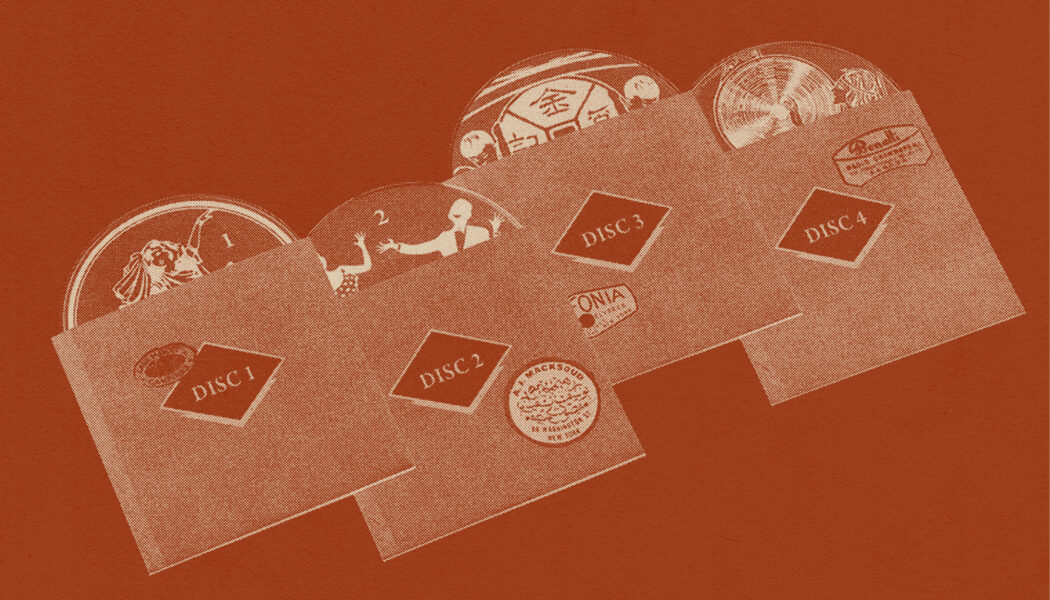As told by April & Lance Ledbetter
A retrospective with the founders of Dust-to-Digital on the moments, people and projects that created the record label that really is a lot more than a record label magical night.
In the Beginning with Lance
If you go way back when I was 14, I had to keep a journal for one of my high school classes. I grew up in a small town called LaFayette, Georgia. For the assignment, I had to answer the question, ”What do you want to be when you grow up?” to which I responded that I wanted to have my own record label. That would’ve been around 1990-1991.
In 1996, I moved to Atlanta. I got a job as a DJ at WRAS, the radio station at Georgia State University. I also interned for a record label called Table of the Elements. It was in February of 1999 that I had the idea to begin working on a project that became the first Dust-to-Digital release. It was around that time when I met April, and shortly after we began working on our first project.

1998
Joe Bussard
The origin of Dust-to-Digital could be traced to our first encounters with Joe Bussard. Joe was a record collector in Frederick, Maryland. Lance found his phone number online during the time he was producing his weekly radio show in college. He called him and said, “Hey, I see your name on the back of these records and CD reissues. They all say you gave the original records to let them borrow to make these reissues. I’m looking for gospel recordings,” because the radio show was on Sunday mornings, and the audience had been requesting to hear gospel music. He started sending cassette tapes that he made for the showdown to Atlanta. That was the beginning of what became Goodbye, Babylon, listening to those tapes.
After Goodbye, Babylon came out, we stayed in touch and ended up co-producing a project called Fonotone Records, which was the name of Joe’s record label that he started when he was a teenager. He ran it until his 30s, and it was the last 78RPM record label in the United States. We compiled what we felt were the best of the recordings and created a CD box set.

A highlight was the record release party here in Atlanta. We booked some of the people that were on the box set to come and play, including The Roan Mountain Hilltoppers from East Tennessee, who were just fantastic. We had presented release parties before, but that one was the first that was sold out. It was rowdy and amazing because The Earl, where we put on the show, is a club in East Atlanta where a lot of rock bands play. It has a kind of edgy and divey feeling. So having this old-time music at that venue was really fun. The people that came really got into it. It was a square-dancing meets mosh-pit dance style—a mix of old-time meets punk. Joe sat at the merchandise table. He had a pretty large fan base in Atlanta because we had been sponsoring his Country Classics radio show every Friday evening on WREK for several years. He was selling cassettes, so a lot of people were there to meet him, hear his stories, and get his autograph. It was a magical night.
2003
Goodbye, Babylon
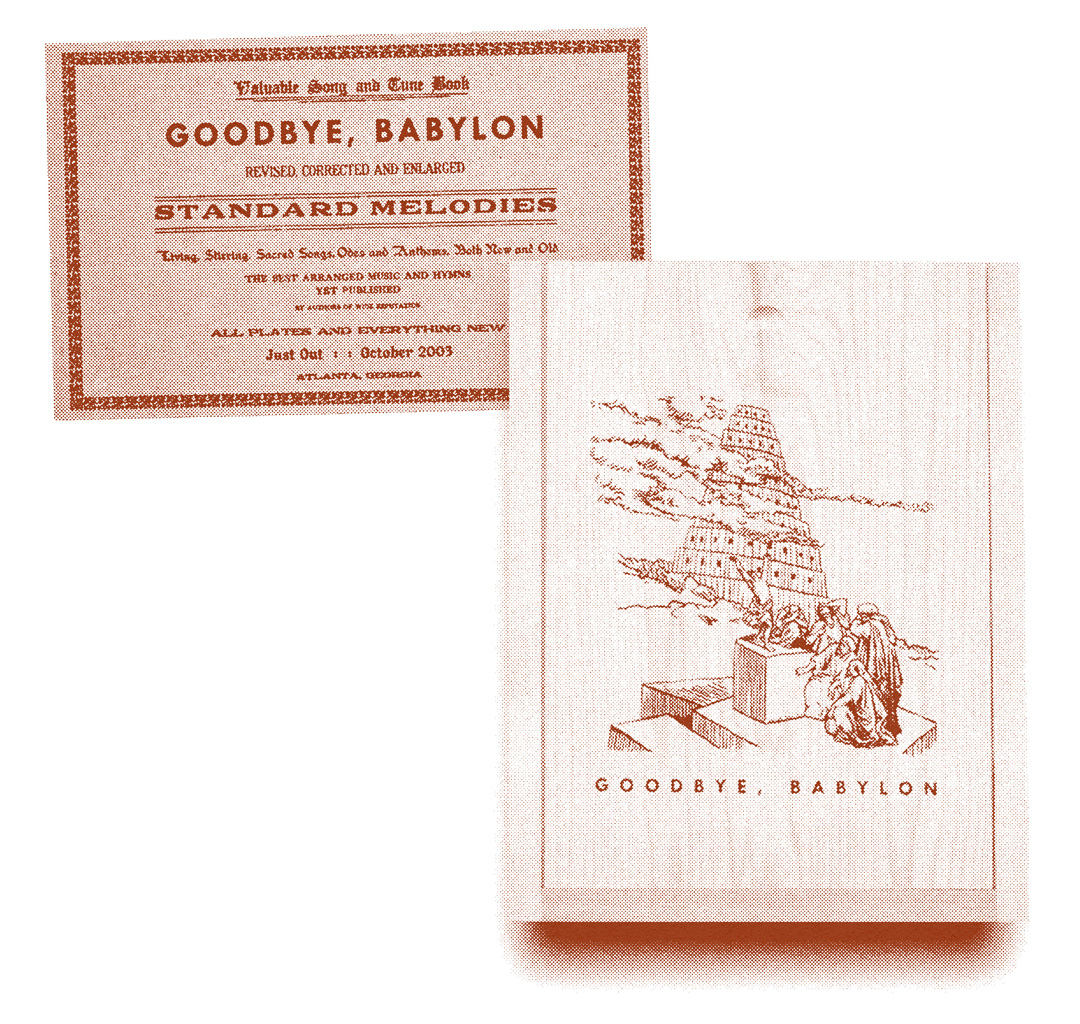
At the beginning, in early 1999, the vision was for a single CD of rare gospel recordings from the 1920s and ‘30s, accompanied by a nice booklet of liner notes. But the project ballooned and expanded. We ended up working on the production for four and a half years, and it became a six-CD box set with a 200-page book called Goodbye, Babylon. It was the first Dust-to-Digital release.
We were hand-assembling the cedarwood box sets, and then shrink-wrapping every one of them. It was amazing to create something intellectually and conceptually and then have it become realized as an actual product—not just consuming but actually contributing to culture. It was the first time that we really got to share music that we were passionate about with a public audience—with tracks that we hand-selected. And that was the birth of Dust-to-Digital.

2008
Art and Margo Rosenbaum, Art of Field Recording
Art of Field Recording Volume One: Fifty Years of Traditional American Music Documented by Art Rosenbaum was a box set that we compiled with a folklorist who taught painting and art at the University of Georgia, a man by the name of Art Rosenbaum. Art had spent decades going out and taking his reel-to-reel tape deck around to a bunch of different locales trying to find musicians to record.
He would travel to make these recordings while his wife, Margo, photographed the musicians during their performances. Then Art would go back and listen to the recordings and paint murals of the artists whom he had just recorded. He would listen to the music and paint from his memory and from Margo’s photographs—it’s a really deep and unique way to interact with music.
We would travel to Athens, spend the night with Art and Margo to work on this project. They were so interesting and lovely—it became a friendship as well. It was cool to see another married couple that endeavored into work life together. We also got to share one of the most thrilling moments of our lives with them because The Art of Field Recording Volume One was nominated for two Grammy Awards and won for Best Historical Album.
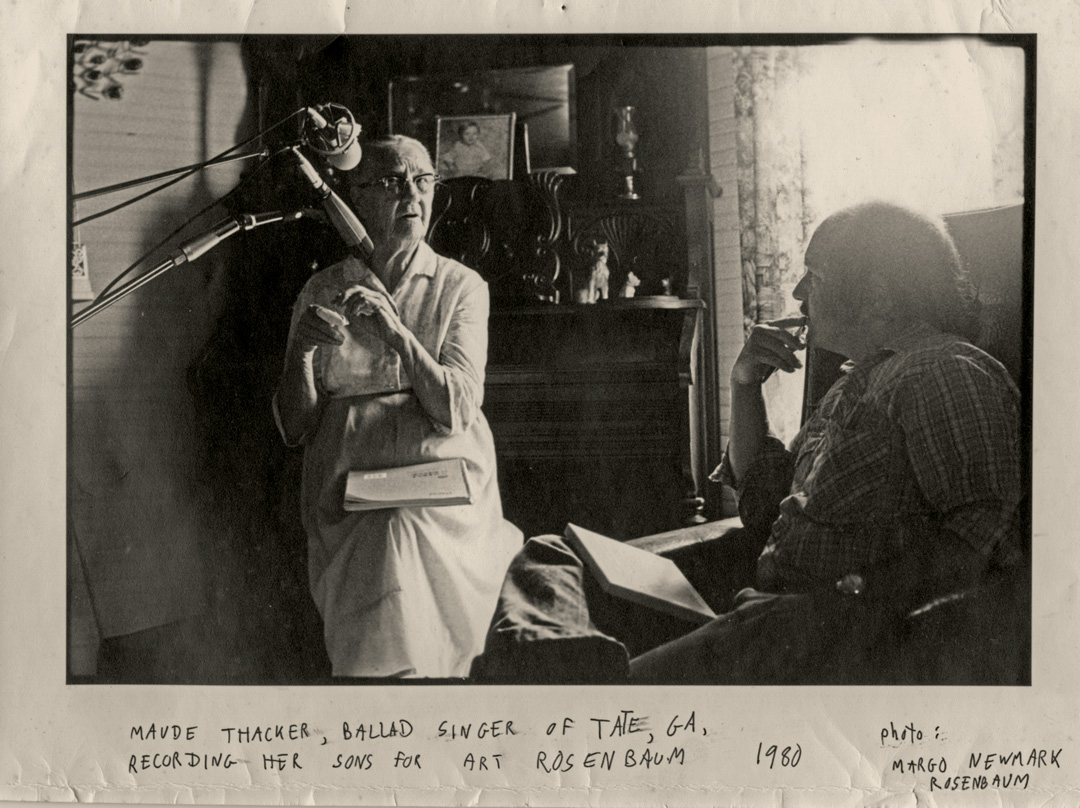
It was amazing to be on the stage and see Art get to have a shining moment that his work led to. To see vernacular music being celebrated at this mainstream music event meant so much to Art because the recordings that he made were not by famous musicians—they were recorded on the front porch of a home, or at a small country church, or during a local music festival. It was inspiring because Art never considered what he did to be work. He didn’t consider it a hobby either. It was his passion.
That night, during the big ceremony, sitting next to Art, he had a sketch pad out and he was sketching the scene of the performance. Then of course his total partner in so many ways, Margo had her camera, snapping photos of people without anybody asking her any questions.
2010
Reverend Johnny L. Jones
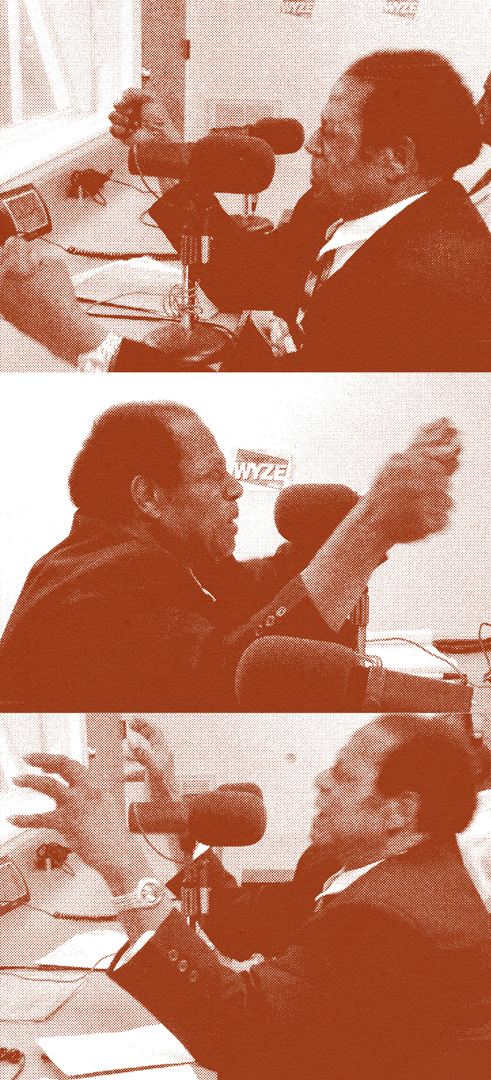
We produced two releases with Reverend Johnny L. Jones. The first was an LP entitled Jesus Christ A to Z that we put out in 2010. The following year when we were discussing the title for the follow-up, Johnny explained to us how he had been given the nickname “The Hurricane” by an Atlanta radio DJ in the late 1960s when he made his first recordings for Jewel Records out of Louisiana. That inspired the title The Hurricane That Hit Atlanta, a double CD which we released in 2011.
Johnny was a Baptist preacher from Marion, Alabama, who moved to Atlanta to preach in the late 1950s. He had been recording his sermons and services for almost 50 years. When asked about how many recordings he had, he replied, “The amount of tapes I have wouldn’t even fit in the back of your pick-up truck if we tried.”
We connected with Reverend Jones via some friends, Bradford Cox, who’s in the band Deerhunter, and Cole Alexander, who’s in the band The Black Lips. They had come across a record of Reverend Jones at a thrift store and really loved it. Cole, just out of curiosity, went to the office of WYZE, an AM gospel radio station near Grant Park in Atlanta, with the record and asked, “Do you know anything about the person who made this record?” The woman working the desk responded, “Oh, yes, I do. He does a radio show here every other Saturday.” And that’s how they ended up meeting.
Reverend Jones made some cassette tapes for Cole, and Cole passed those onto us and said, “Would you want to do something with these?” We thought they were incredible. They were sort of low fidelity, pretty raw—but the passion that was coming through the speakers when you’d listen to it was undeniable.
It was very passionate music accompanied by beautiful melodies from the choir. We were fortunate to attend his services in person. His sermons were really intense—experiencing them you could understand how Johnny was given the Hurricane nickname. He would build the tension up in the sermon and start spinning like a hurricane.
It was an honor to go through his recordings with him to put together what ended up being two releases. He would tell us stories about chauffeuring for Martin Luther King, Sr. and preaching sermons after devastating murders and assassinations, many of which we documented in the liner notes. Through those two titles, this touchstone to the Civil Rights movement that was such a big part of the history of the city that we live in continues to live on.
2012
The Launch of Music Memory
At this point in the journey, we had been managing Dust-to-Digital for nine years. Our company’s name was out there, and a lot of incredible people who respected our work were pitching us great projects. The problem was that the state of the record industry did not provide the commercial viability that these projects required. We were well aware of that fact, but we also knew how important it was that these recordings and stories be preserved and documented so they could be accessible in the future. This is what led us to start Music Memory, our nonprofit organization dedicated to audio preservation and dissemination.
We began to reach out to the record collectors whom we had encountered in our work with Dust-to-Digital and began collaborating with them to digitize their records. We were operating in a style that differed from most larger institutions. For example, the Library of Congress would require the media to be shipped to its central transfer location, but based on our experience, collectors of rare records almost never want them to leave their premises. So to best facilitate the digitization of such valuable records, we ended up accommodating the collectors by training technicians and setting them up in the collectors’ record rooms, which are often inside their homes. They would digitize the records, and our audio engineer in Atlanta would download the audio files and quality-check them remotely. To date, we have transferred over 50,000 recordings via Music Memory. It is our goal to make all these recordings publicly accessible via a database website in the future.
2015
Dario Robleto
In 2013, we were contacted by a visual artist named Dario Robleto from Houston, Texas. He was the first person to express to us that he believed the work that we were doing was art. Not in the sense of our graphic design or packaging; he was speaking about our process: selecting the recordings and building these objects. Dario said, “What you do is art and you need to have exhibitions in museums.”

With Dario’s help, we participated in SITE Santa Fe’s 20th-anniversary exhibition in 2015. Then in 2018, we worked with Dario to take part in the citywide exhibition Prospect.4 in New Orleans.
It has been meaningful to have the art world receive what we do as art. It felt really validating to be seen in this way because the work we do can be viewed through a lot of different lenses. We’re a record label, but not a traditional record label. We release historic audio, but we don’t always release historic audio. We’re known for box sets, but that’s not the format we choose for every project.
Having Dario connect with us was incredible. It speaks to how this work can live in different spaces and be expressed in different ways.
2011, 2020
Jonathan “Jon” Ward, Excavated Shellac
Our most recent box set is entitled Excavated Shellac: An Alternate History of the World’s Music. It is the fourth production we’ve produced with Los Angeles-based record collector Jonathan Ward. We met Jon through his blog, which he started in 2007. Unlike Joe Bussard and many other record collectors with whom we have worked, Jon focuses his collecting on music recorded outside the United States.
On his blog, he selects a song and then writes extensive liner notes just on the one recording. We were amazed at how much information he could compile which included so much in-depth knowledge that we could tell he was eager to share with his readers. We got in touch with him and conveyed how we loved the blog and asked Jon, “If you could do your dream release, what would it be?” He said, “I’d love to do a set featuring 78s from Africa.” That was the first release we ever did with Jon. It is called Opika Pende: Africa at 78RPM, and in 2012, it was nominated for the Grammy Award for Best Historical Album.
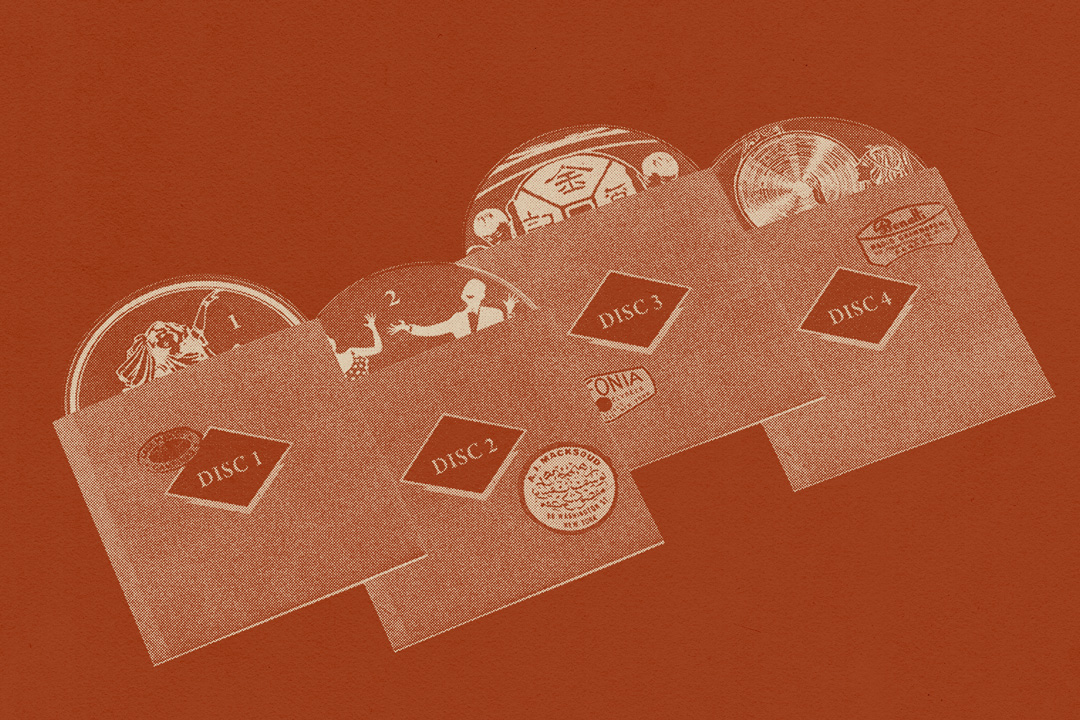
After the box came out, we worked on a couple of single albums with Jon, and then he began compiling recordings and writing for another large-scale compilation entitled Excavated Shellac: An Alternate History of the World’s Music. We released it in December 2020, during the pandemic, as a digital-only title in large part because logistics for physical items were so complicated. The post office had been undermined, and it was difficult to ship things reliably. We felt like this set had the potential to bring people a lot of joy and inspiration during a time of confinement and solitude. We released it to our website and via Bandcamp, and it kind of exploded. It was similar to Goodbye, Babylon in that it just took off. Last year we released the physical edition as originally planned—super deluxe.
2018, 2023
William “Bill” Ferris, Voices of Mississippi
William “Bill” Ferris was teaching Southern Studies at the University of North Carolina and invited Art Rosenbaum to come to speak to his class. I think Bill saw the Art of Field Recording box set and thought, “I’ve got a lot of recordings too. The people at Dust-to-Digital should know about my collection.”
We collectively listened to over 250 hours of audio for the box set that became the Voices of Mississippi: Artists and Musicians Documented by William Ferris—85 hours of audio of just one artist named Son Thomas, who’s on the cover of the box set. That set took a long time to edit together. The result was three CDs, a DVD of Bill’s documentary films, and a hardcover book.
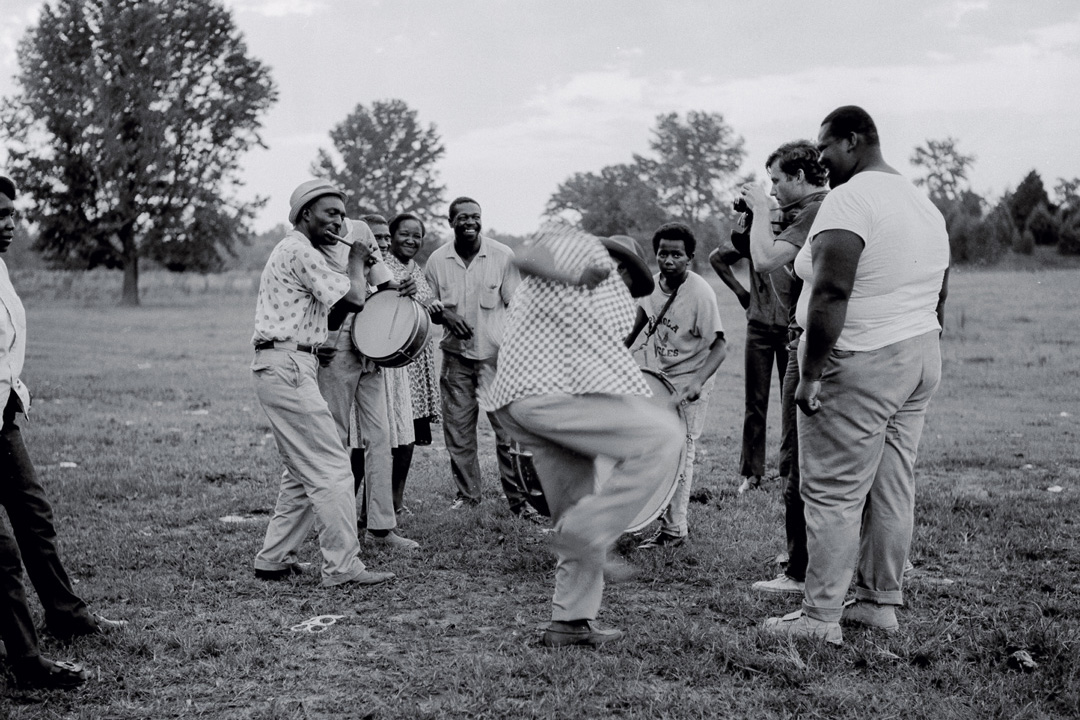
In February 2019, the box set won two Grammy Awards, almost 10 years to the day after the Art of Field Recording won its Grammy Award. Soon after, a booking agent reached out to us to see if any of the artists on the box set were still living and if they would be interested in touring. We told him that there aren’t any, but there are several grandkids of the artists featured on the set that play professionally.
Our discussions led to the Voices of Mississippi live show—a blend of clips from Bill’s documentary films which he made in the 1960s and ‘70s with live performances by artists who are still continuing the Mississippi musical traditions today. The result is an immensely powerful event. It’s a show where you get to see the history of music through the descendants of the musicians featured on the box set.
The show has appeared at Jazz at Lincoln Center, as well as performing arts venues in Bethesda, St. Louis, San Luis Obispo, and Tacoma. This fall, the tour will continue with shows in Nashville and Jackson, Mississippi. We are currently planning to bring the show to Austin, Knoxville, and New Orleans with our sights set on Europe for the summer of 2024.
Today
Social Media
In the beginning, we had a pretty standard approach to posting on social media: new release announcements, news about the label, and live event updates.
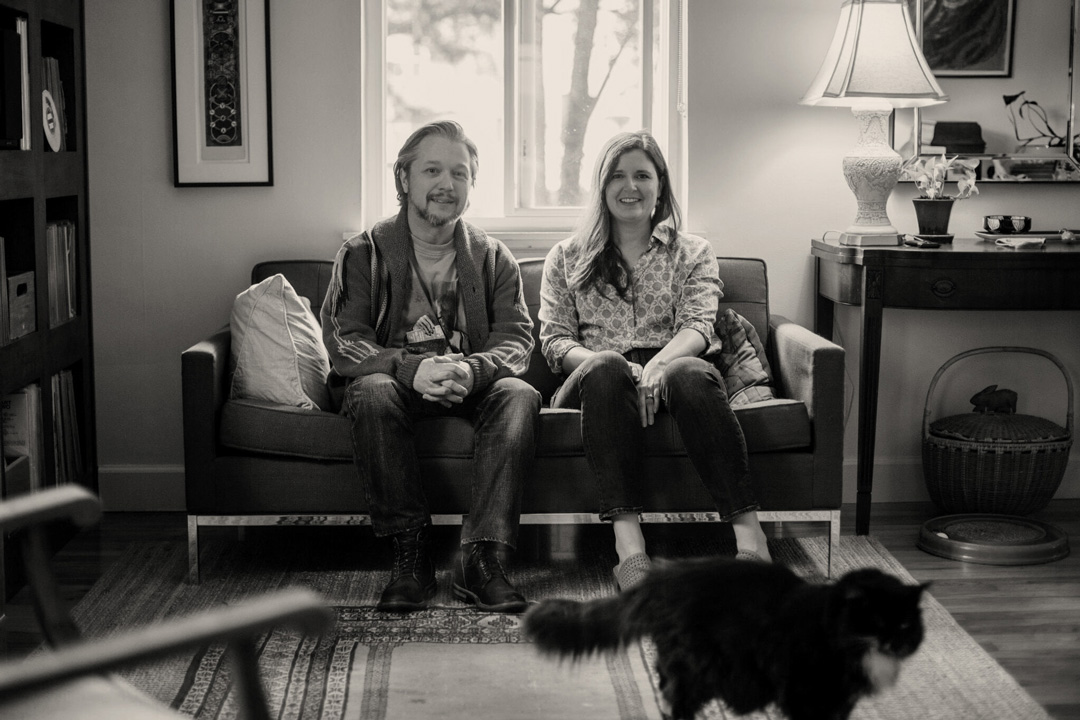
Around 2016, Lance had this epiphany to post videos from his personal archive without it having to relate to a Dust-to-Digital release—which was inspired by video-viewing sessions that we would have with touring musicians and friends. We did that a couple of times, and it was maybe the third video that really took off. That Friday we had 10,000 followers, and by Sunday, we were at 20,000. We doubled an audience that took eight years to grow in just three days. Although growing the audience is not the primary goal, it is a sign that people are enjoying the material. It is this connection with our online audience, currently at 2.6 million followers, that continues to drive us to share music that moves us.

